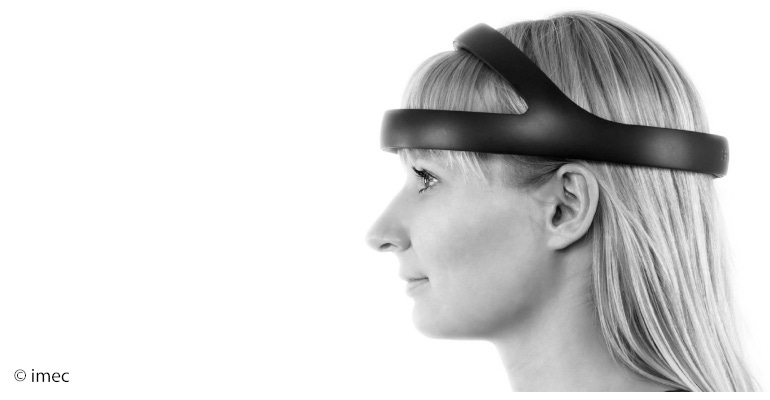Five considerations for electrode design to maximize performance, comfort, and durability of wearables.

Wearable technologies have rapidly become a major healthcare industry trend. It comes as no surprise that the wearables market revenue is projected to reach a market volume of US $18 billion by 2024 according to Statista. In medical applications, wearable devices can diagnose conditions ranging from Alzheimer’s to concussions. Although at-home wearables can also treat stress and be incorporated into gaming via headsets, wearables are namely known for their important role in critical medical testing. In a pandemic, these innovations can offer alternative, remote solutions for overwhelmed hospitals that must measure and monitor health conditions of chronic, non-coronavirus patients. These include electroencephalography (EEG), used to evaluate the electrical activity in the brain; electrocardiography (ECG), which measures the activity of the heart; electromyography (EMG), which measures neuromuscular activity; and electrooculography (EOG), a technique for measuring eye movement.
In order for wearables to function across all of these categories, they must be equipped with sensors such as electrodes. Electrodes incorporated into medical devices serve to transfer the ionic current energy in the body into electrical current, which can be amplified and measured for diagnosis—or even treatment of illness or injury. However, not all electrodes function and perform the same across such a wide range of applications—or offer the same levels of performance, comfort, and durability to ensure accurate readings and maximize efficiency of use. To achieve this goal and offer greater care to patients, here are five considerations that design engineers should make when designing medical devices with electrodes.
1. Equip Electrodes with Materials that Offer Greater Convenience and Superior Performance
Various material properties contribute to the overall performance of electrodes. The type of material determines quality of performance and convenience. For example, elastomeric material (rubber) provides a softness compared to the more commonly used metal or rigid plastics, which enable the electrodes to be used for a longer period of time with greater comfort—by hours or even days. Elastomeric electrodes also do not require gel for the application, further enabling greater patient comfort. Eliminating the need for gel also minimizes the time needed for set-up and for clean-up, providing greater convenience to end-users like doctors and other medical assistants. Moreover, eliminating the use of gels can also reduce potential skin irritations in long-term use applications in some patients.
Greater “wear comfort” yields other potential benefits, like accuracy. When wearables are uncomfortable, patients are less inclined to wear or use them correctly, interfering with the results of a reading or patient adherence to a therapy. Consider how the patient feels with a headset on. Any poking or discomfort that might cause them to shift the headset around could jeopardize the results. Imagine a user being stressed by an uncomfortable electrode during an anti-stress exercise. This can ultimately impact the accuracy of a reading, making softness necessary. Datwyler has applied this understanding to its own electrodes, which are engineered with a comfortable rubber material to ensure greater patient compliance.
2. Customize Electrodes to Enhance Patient Comfort and Effectiveness
As the healthcare industry shifts toward value-based care to produce better patient outcomes, manufacturers must consider designing electrodes that can better meet critical needs. Electrode manufacturers can tailor-make electrodes to fit the needs of device manufacturers that are specific to application, adjusting for various shapes and sizes. When considering the applications for wearables, shape and size become pertinent.
For one, in-ear application electrode uses must adapt to the geometry of patient ear cavities. For in-hair applications, which are known to present challenges to receiving signals, engineers can work with a supplier to design electrodes in a brush format with pins for better penetration. This design operates through the hair in order to establish a better, more stable signal. Pins can be customized to adapt to hair thickness and texture among other characteristics.
There are several ways electrodes can connect to a device. For example, a snap can provide a removable connection while a wired or metal plate connection provides a permanent contact. When designing electrodes that have contact with a wire or device, engineers should consider overmolding non-elastomeric materials such as copper wires or plates. This method can be utilized if manufacturers are looking to embed electrodes in belts or patches. With the ability to customize the electrode design, Datwyler can tailor-make electrodes that are specific to size, shape, and application. This way engineers can develop a device that is advantageous to patients, caregivers, and even manufacturers as production processes can be upscaled to massive industrial volumes.
3. Consider the Electrode Coating for Your Device Application
The quality of the coating on the skin contact area of an electrode contributes to robustness of the overall product and guarantees performance in various environments. Many EEG wearable applications have been launched into the market and others are in development. At-home wearables can allow early detection of neurological issues from the comfort of a patient’s home. Because a test of this nature would not necessarily be under the physical supervision of a healthcare professional, electrodes—and particularly the coating—need to be able to withstand frequent use.
Electrodes must stand up to many adverse conditions and obstacles along the supply chain and in use to maintain reliable performance over the lifespan of the device. In any supply chain, cleaning and storage environments that experience varying temperatures, dryness, and dampness can affect the performance of electrodes over time. Moreover, with patient use, electrodes must endure bodily functions such as perspiration, rubbing, friction with hair, and others. As such, it is critical to ensure that the electrodes are properly coated to mitigate any impact or damage from these factors. Datwyler identifies the best coating material and optimal processes, a crucial step to ensure the best performance.
4. Design Electrodes to Minimize Challenges with Performance
Testing electrodes facilitates the understanding of potential impacts of the design on performance. In several EMG and ECG applications, for example, patients will move during monitoring, creating a challenge to keep electrodes in place. Embedding the electrodes in the contact area of a device such as a patch or elastic band or similar for a better fit helps to compensate for that challenge. Through such testing, manufacturers can ensure that their wearable devices can perform its function despite frequent movement, ultimately elevating their brand in the industry.
5. Don’t Compromise Electrode Signal Quality
Achieving the correct balance of softness and comfort without sacrificing signal quality is essential. Customizing solutions at the prototyping phase is a relatively easy task, thus device designers should work closely with suppliers that offer that capability. Robust electrodes can typically be used hundreds of times, depending on the specific use. By implementing strict quality control methods, manufacturers can ensure that a significant increase in uses is accomplished without compromising signal quality. For example, Datwyler conducts a very stringent abrasion test to ensure that coatings on electrodes will stay intact for as many uses as possible. This way, manufacturers can ensure that electrodes are tested for the highest standards of longevity and robustness.
The Small Stuff Matters
Electrodes may seem like small, minor, and interchangeable components in wearables. However, as critical components they can make an enormous difference in these devices. Medical device brands and even the medical professionals at testing and treatment centers ultimately stake their brand reputation and patient care on how effective and resilient these components are. Smart design drives efficiency and faith in care, accurate results, and the correct diagnosis to determine the best treatment for patients to enjoy the highest quality of life. As such, it is key that manufacturers partner with a supplier that ensures the utmost quality in the components that enable these devices to perform.
About the Author(s)
You May Also Like



